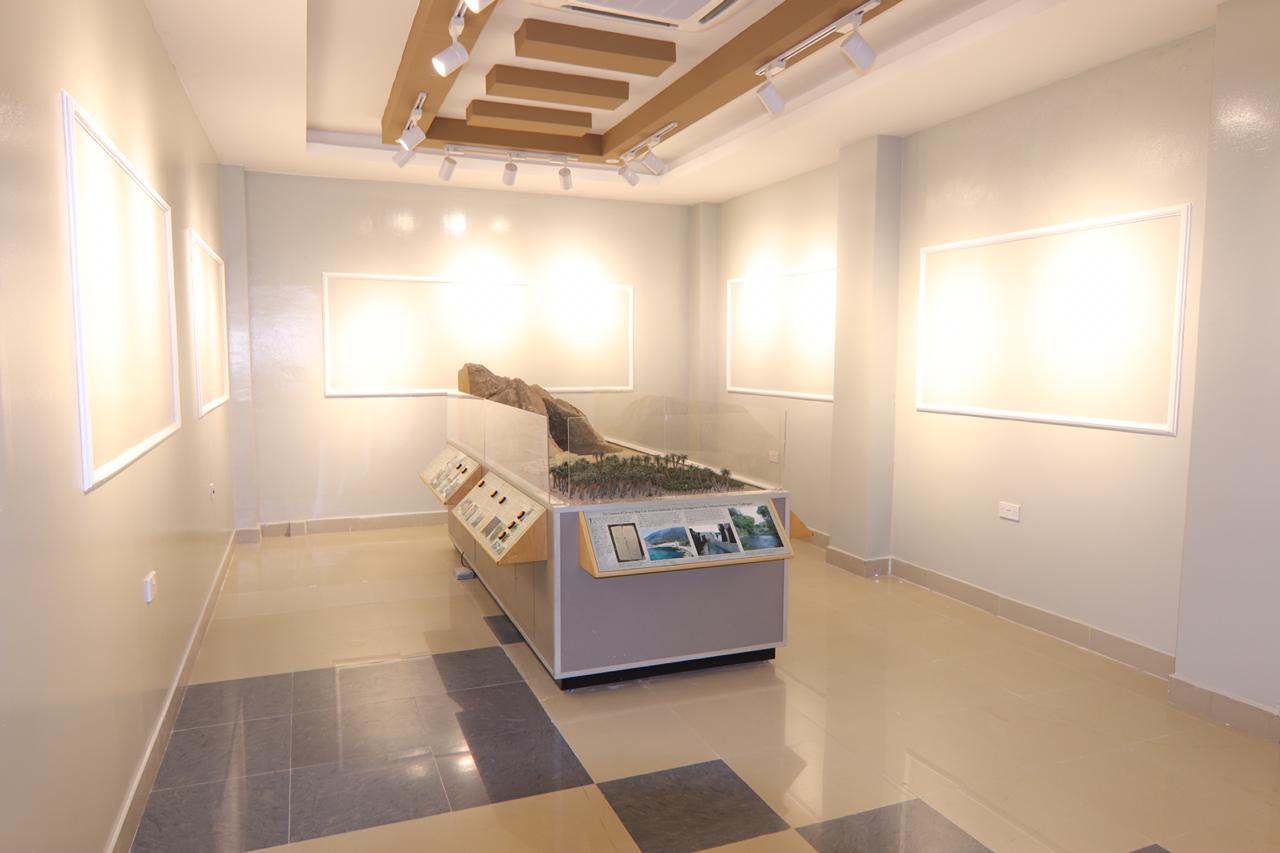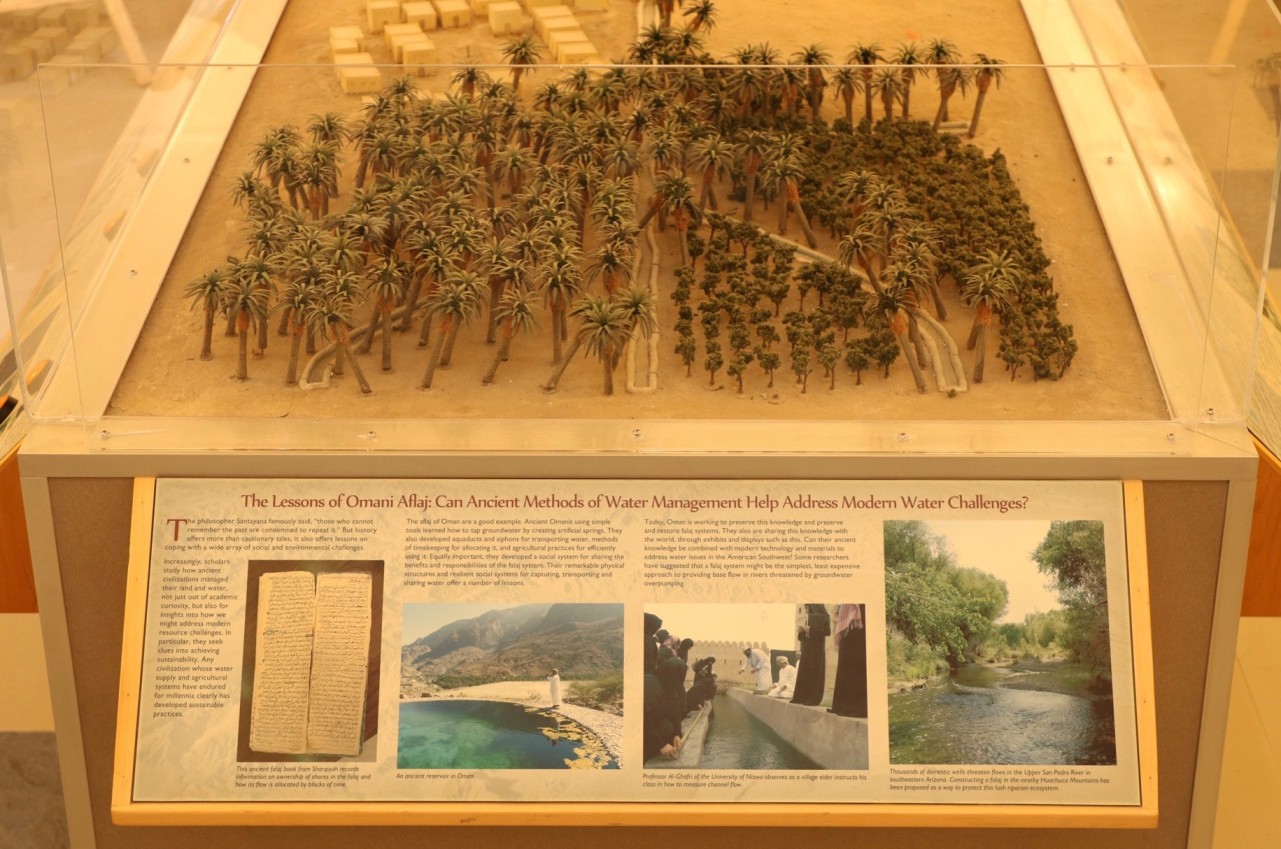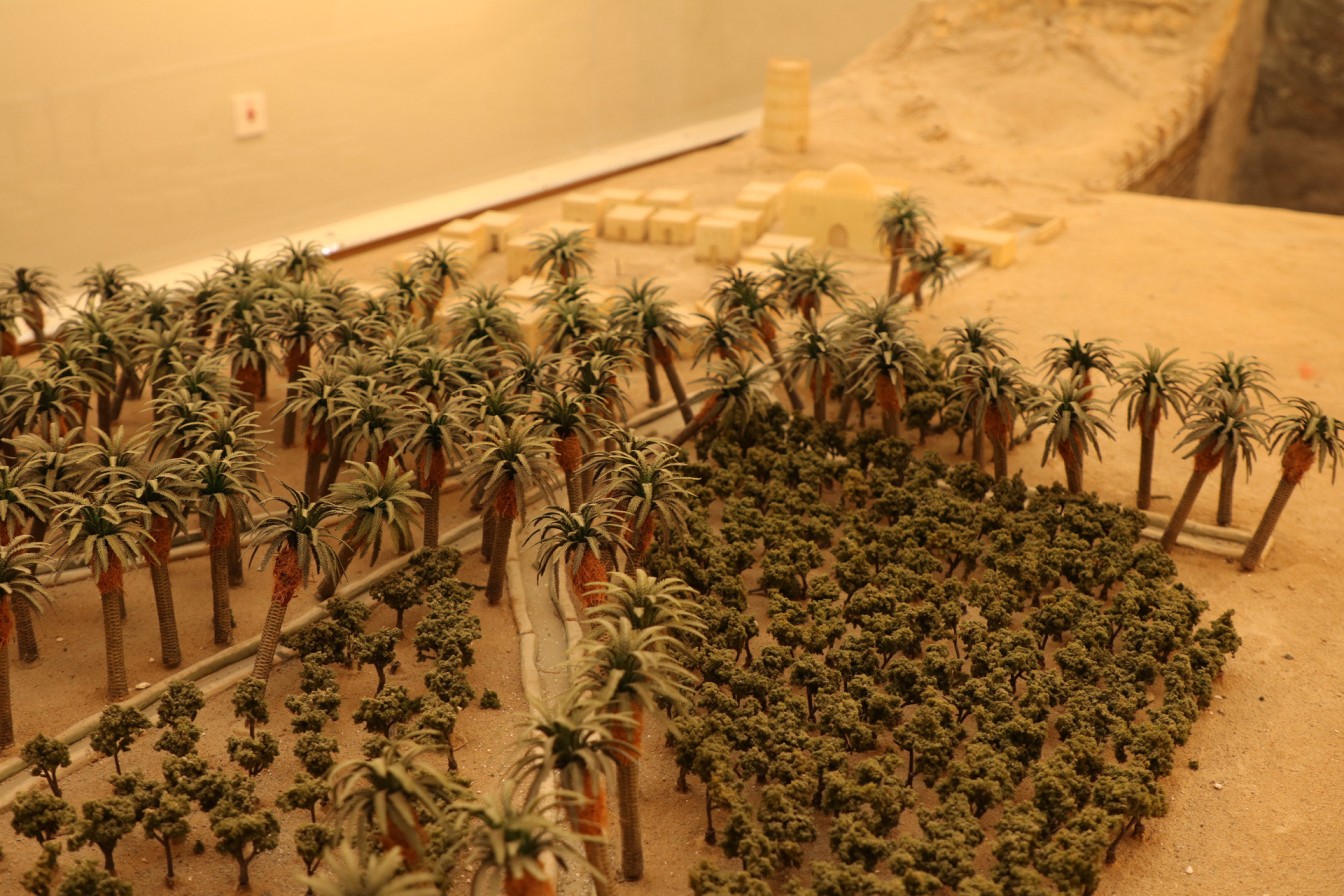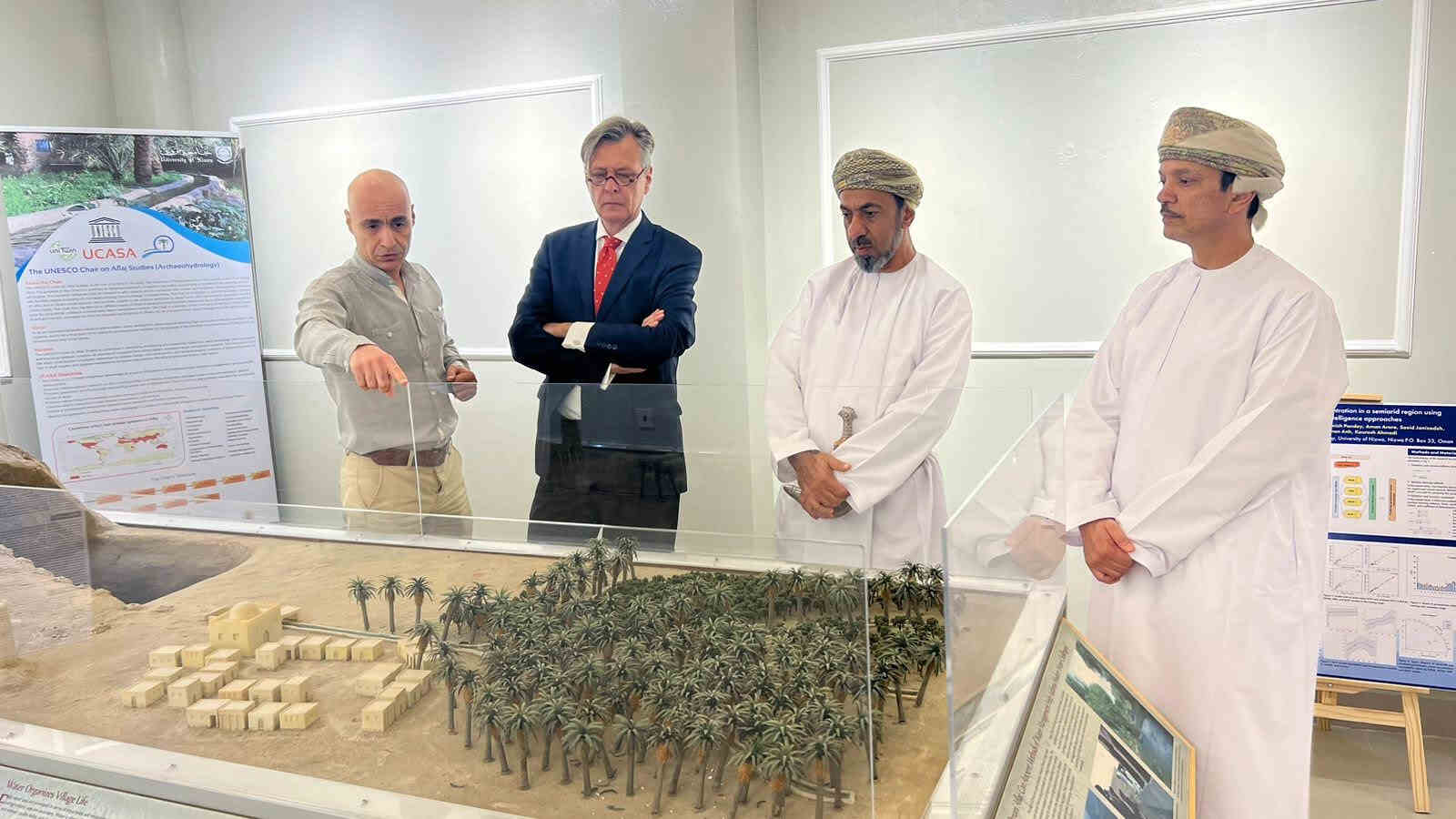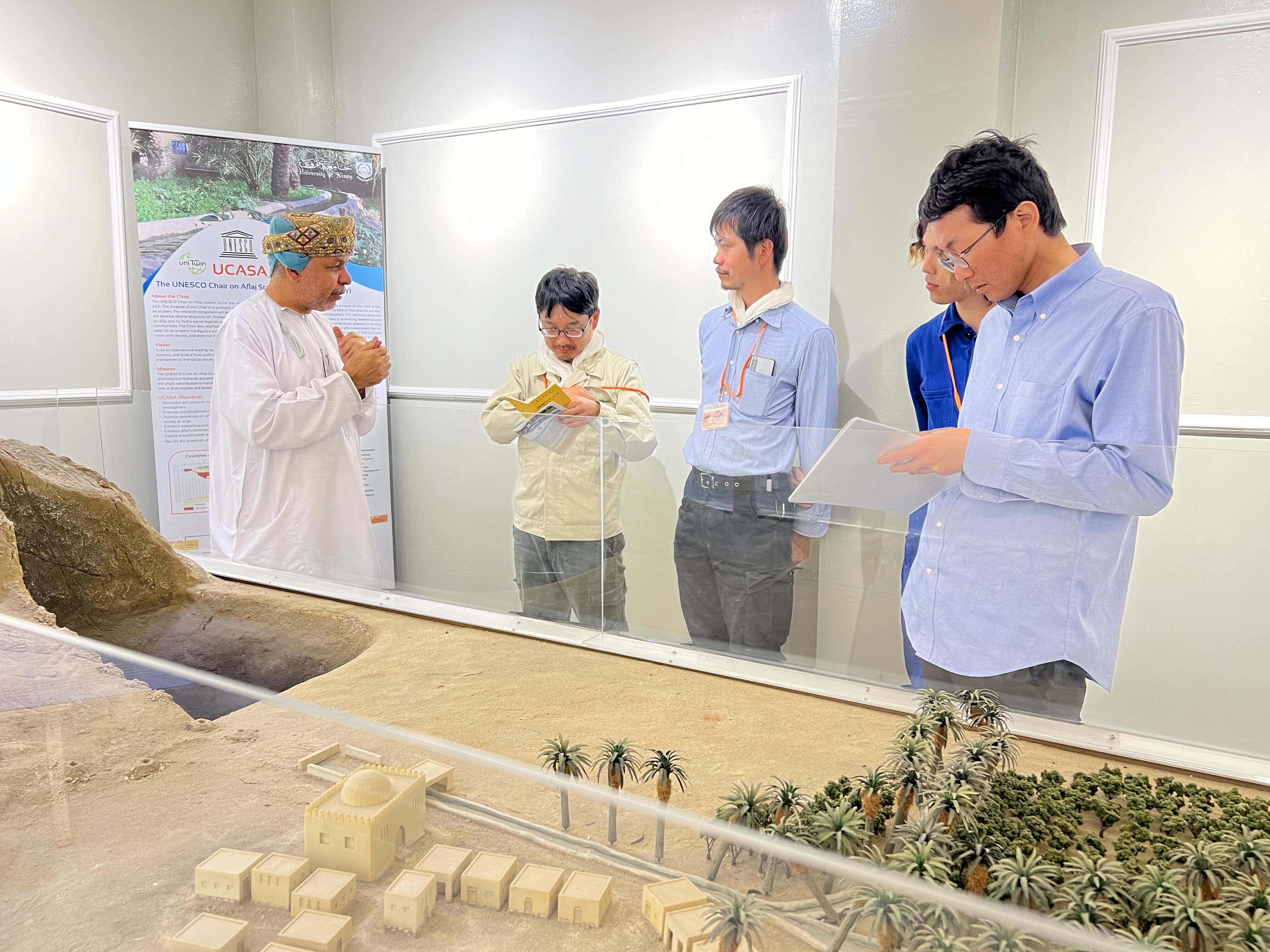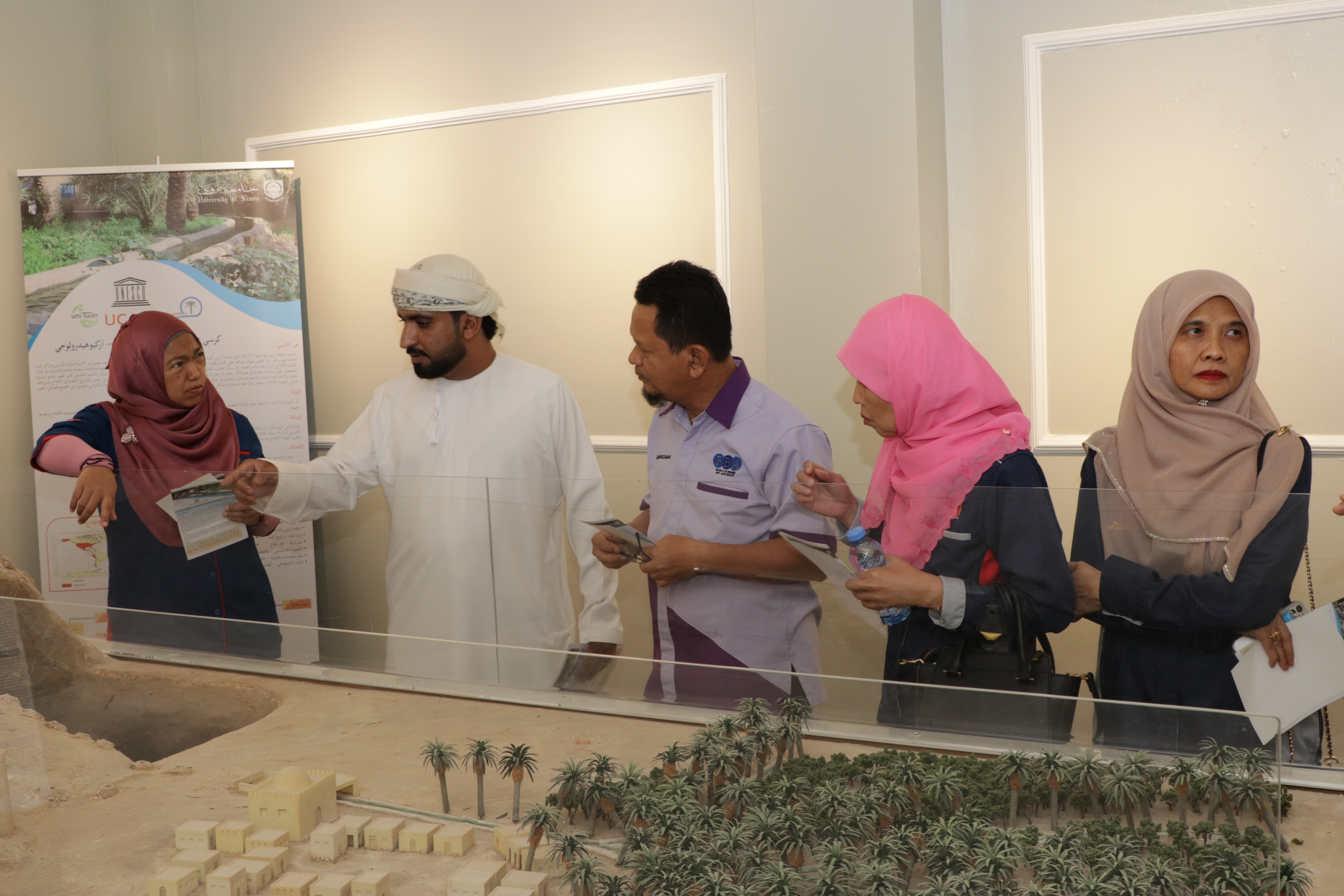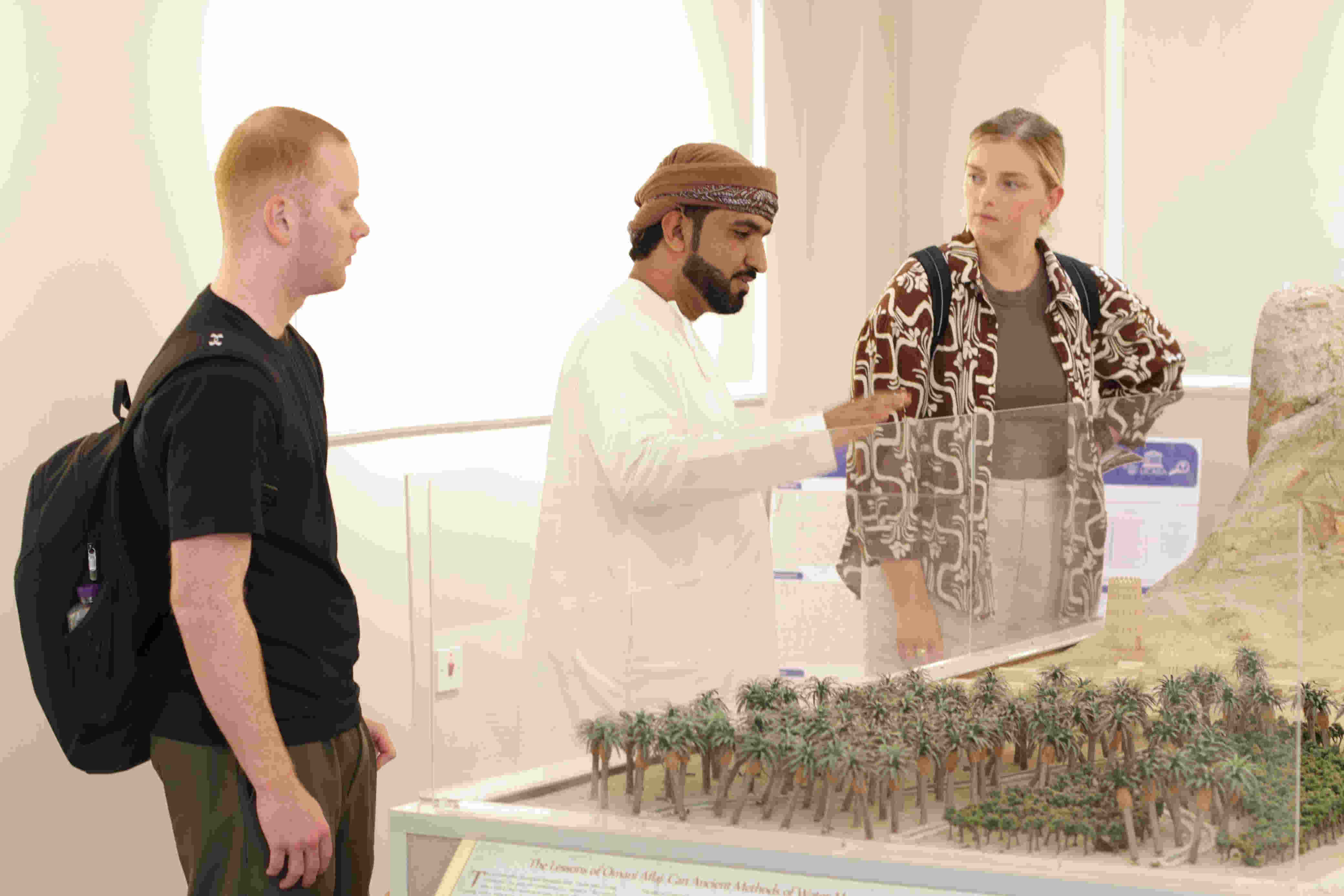معرض الأفلاج
يُعد نظام الأفلاج حلاً إنسانيًا ذكيًا مكّن من استدامة الحياة في بيئات شحيحة المياه، كما هو الحال في عُمان. وقد شكّلت هذه الأنظمة أساس الحياة العُمانية وركيزة ثقافتها، حيث نشأت أنماط الحياة في القرى العُمانية حولها. ويمكن تعريف الفلج (مفرد أفلاج) على أنه نظام مائي هندسي قديم، يُستخدم لتوفير المياه لمجموعة من المزارعين لأغراض الزراعة والاستخدامات المدنية. في اللغة العربية، يحمل مصطلح "الفلج" معنى النهر الصغير. وتنتشر الأفلاج في الجزء الشمالي من عُمان، حيث تتكيف مع الظروف الهيدروجيولوجية والتضاريسية للمنطقة.
الأفلاج العدية: مصدر الماء من باطن الأرض (المياه الجوفية)
الأفلاج العينية: مصدر المياه فيها هو الينابيع الطبيعية (العيون)
الأفلاج الغيلية: مصدر الماء فيها هو المياه السطحية الجارية في أعالي الأودية (الغيول)
يُظهر هذا المجسم نموذجًا لفلج عدي، وهو هدية من مركز السلطان قابوس العالي للثقافة والعلوم وجامعة أريزونا لكرسي اليونسكو لدراسات الأفلاج. تم نقله إلى الجامعة عام 2017، وهو نموذج يعرض فلجًا عُمانيًا تقليديًا، يبرز نظام توصيل المياه المبتكر الذي طُوِّر قبل أكثر من 2000 عام، محققًا استخدامًا مستدامًا للمياه الجوفية.
